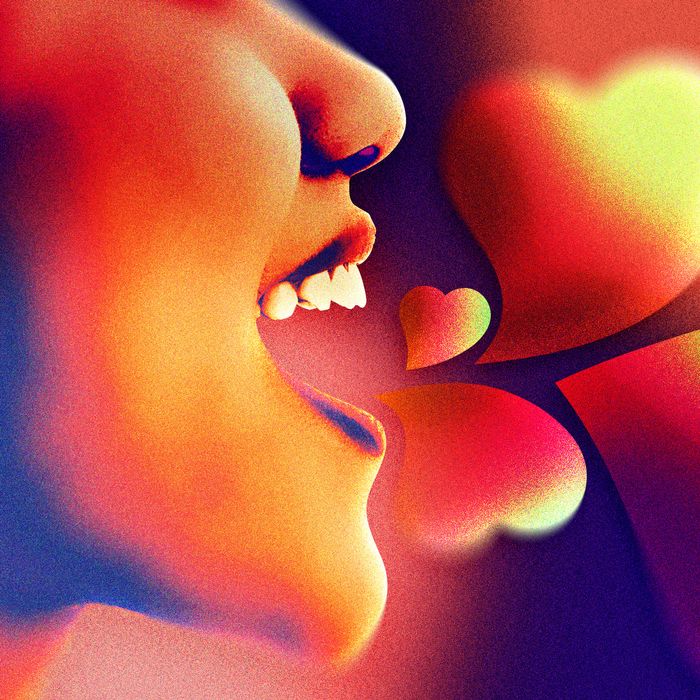
She can’t speak for herself, but I think it’s obvious: Elizabeth Bennet’s love language is words of affirmation. The protagonist of Jane Austen’s Pride and Prejudice, Lizzy is a sharp social observer, famously clever, and, occasionally, a crafter of devastating critique. She delights in storytelling and lives for praise; after Lizzy’s older sister, Jane, expresses surprise that the handsome Bingley asks her to dance more than once, Lizzy teases: “Compliments always take you by surprise, and me never.” It’s Lizzy’s love of words that draws her to the gossipy, charming Wickham, and that initially puts her off reticent Mr. Darcy (“He scarcely spoke ten words to her” during an early visit she makes to his house). Mr. Darcy’s love language, by contrast, is acts of service; he shows his love for Lizzy by saving her sister from the shame of unmarried motherhood. Only at the very end of the book are they able to explain what they’ve tried and failed to show each other all this time: They are in love.
Of course, Pride and Prejudice predates The 5 Love Languages: How to Express Heartfelt Commitment to Your Mate, the 1992 mega–best seller by Gary Chapman, by 179 years, but the latter’s applicability has come to feel universal and timeless. Thirty years after the book’s publication, love languages maintain a strong foothold in modern romance, rivaling astrology and attachment theory as tools that promise to make one of humanity’s greatest mysteries — love — legible.
And like those other tools, love languages are, naturally, extremely popular on TikTok, as is any rubric that enables categorization and diagnosis. Here, the full, weird, and often ugly spectrum of human behavior is subject to mass simplification by virtue of both the medium and the audience (many of whom are teenagers); this is how standard (albeit rude) dating-app behavior becomes criminal, and how using multiple emojis becomes “lovebombing.” This is where people like to dance while pointing to various traits they ascribe to their love language/zodiac sign/sexual orientation/mental illness/hair color/height; a term first introduced with nuance and care is soon diluted and dispersed far beyond its humble origins, and before you know it, everything is a red flag.
It’s tempting to classify love languages as yet another TikTok psychologism, but so far, it seems, the framework remains endearingly unproblematic. The basic gist is this: People express love in different ways, which can be generally broken down into five categories: words of affirmation (like compliments or verbal recognition of some success), acts of service (such as cooking or running an errand so the other person doesn’t have to), quality time (meaning real, connected conversation), physical touch, and gifts. Each of us has a preference and is likely to prefer to both show and receive love in this “language” above all others. Understanding our own language as well as our partner’s allows us to, as Chapman puts it, “keep our love tank full,” and makes for a happier relationship. The book espousing this simple philosophy promptly leapt to the top of best-seller lists upon publication and has never really left — it’s sold more than 11 million copies in English alone, and regularly sells between 7,000 and 11,000 copies per week, according to BookScan.
Because they were developed in the 1980s and ’90s by a Christian counselor and pastor — a now old, white, straight man — it feels like there should be something objectionable lurking beneath the surface, as demonstrated by the friends I spoke to who preceded their love languages enthusiasm with disclaimers. “The guy who wrote them is like a Christian fundamentalist who has sexist beliefs,” a friend in her mid-20s texted me, before adding her love language is acts of service. (To paraphrase a popular Christian tenet, the languages’ secular appeal has a love-the-sin, hate-the-sinner vibe.)
The 5 Love Languages is inarguably heteronormative – it’s explicitly designed for straight married couples — but I don’t find it especially sexist. (Except for the page where Chapman explains that male sexual desire is “physically based,” whereas female sexual desire is “far more influenced by her emotions,” which, whatever.) Chapman alternates male and female pronouns in describing each love language and providing examples; it’s clear he believes any person of any gender can speak any love language, and none is worth more or less than the others.
Orna Guralnik, a couples therapist and star of Showtime’s Couples Therapy, feels similarly. “I really appreciate the idea that the love languages communicate the notion that people’s differences don’t make them more or less loving,” she tells me. “People really can love differently.” Often, when couples find themselves in conflict, each partner views their own way of expressing love as the right way, and therefore sees the other partner as deficient or even absent.
If there is a gendered component to the love languages, it’s the same story across the self-help spectrum. “It’s way more women than men” who bring up love languages in therapy, says Matt Lundquist, the founder and clinical director of Tribeca Therapy. “I think it’s similar to the reason many women read their horoscope, which is because it’s interesting and fun.” Men who date women may be more resistant to love languages, whether because they’ve had less exposure to them or because they perceive them as feminine and unserious. A 34-year-old friend I’ll call Emma tells me she identified her husband Mark’s love language early on in their relationship (acts of service), but because he refuses to admit he has one, or that they’re “real,” she avoids it. “He loves when I take out the garbage unexpectedly, when that’s his job,” but because he won’t explicitly adopt the love languages framework, “I withhold, and that’s on him,” she says. (“I say that half-jokingly,” she adds.) Emma speculates that Mark associates the love languages with astrology and so dismisses them as similarly woo-woo — an association she admits is probably fair, given that she is into both.
In queer relationships between women, that association is likely more welcome. Sasha, 34, tells me that she and her girlfriend routinely discuss their love languages, just as they also discuss astrology, attachment styles, and “childhood vulnerabilities.” The lesbian urge to process (like the lesbian urge to merge) is one of those stereotypes that exists because it’s at least partly true. Women are socialized to socialize, and to feel, and to socialize about how we feel, so it stands to reason that romantic relationships between women may be more likely to incorporate frameworks, like love languages, that provide new ways to discuss and organize those feelings. This does not, of course, mean women are inherently any better at, ahem, speaking those languages.
“A few years back I was in a relationship where my partner’s love language was words of affirmation,” says Chelsea, a 30-year-old acquaintance of mine from Brooklyn. “Mine is acts of service. We always clashed. There are times I’m willing to learn another person’s language, but other times it just won’t work. No one’s at fault.” Just as we all have our preferred love language, most people have a love language (or two) they feel least able (or least willing) to express — but, as with so much else, what seems impossible with the wrong partner becomes easier to imagine with the right one. Nobody wants to give gifts to someone they’re not really into, just as being complimented by someone you’re otherwise incompatible with probably won’t provide a lasting source of happiness.
Still, experts I spoke to see love languages as a generally expansive (rather than restrictive) tool with which to better understand ourselves and our partners. “With something like attachment styles, people can be really rigid and stick to it without understanding all the theoretical foundations behind it,” says Ali Jacowitz, a clinical psychologist and the co-founder of Park Slope Therapy. “Love languages are a blanket idea for something that doesn’t need a lot of in-depth understanding. I see it creating empathy between partners.”
A friend I’ll call Julia recently gave birth to her first child, shortly after moving in with her husband. Like many people working in medicine, residency kept them long-distance for a few years, and while living together was an exciting development in their lives, their new baby has left them struggling to find quality time, their shared primary love language. Julia thinks the love languages framework gave them a way to discuss this deficit plainly, even scientifically, without casting blame on each other (or their daughter). As a result, they’ve agreed to prioritize their shared secondary love language (acts of service) for the time being, writing individual to-do lists from which they can cross items off for each other.
Though book sales have been largely consistent over the past year, Lundquist also speculates that love languages feel particularly relevant among both single and partnered patients lately — albeit for different reasons — largely due to time management and existentialist questions prompted by the pandemic. “We’re in this moment where people are diving back into dating, and maybe thinking differently about dating,” he says. “And for people who are in ongoing relationships, many of us who’ve spent a greater percentage of time with our partners are reflecting on questions like: Are we a good fit? What are the qualitative aspects of building a good relationship? How successful are we at comparing needs?”
Perhaps what’s most unrealistic about Chapman’s book is the assumption that two people in a relationship will be equally invested in these questions’ answers — that both people will, on learning their partner’s love language, make a good-faith effort to speak it. This, for Guralnik, is one area where the love languages fall short of the cure-all Chapman, at times, portrays them to be. “People are different from each other in lots of ways, and coming to terms with that is, I think, the biggest challenge for couples,” she says — referring not only to love languages but differences in how people want to spend their time, spend their money, raise children (or not), and so on. Says Guralnik, “People spiral around their differences and get into very negative spaces, and good faith can run out.”
If the love languages have superseded their origins in broader culture, the book is very clearly anti-divorce. Chapman is fond of the statistic that holds that second marriages are even more likely to end in divorce than first marriages, never mind the countless variables that mitigate those figures. In the 30 years since the book’s publication, norms around marriage and divorce have (somewhat) shifted — outside the confines of the conservative church, at least, staying in a marriage is not necessarily an indicator of the marriage’s success, and getting divorced isn’t necessarily a tragedy. There are many reasons a relationship might come to an end; rarely is it as simple as a mismatch between love languages.
That said, it’s not not a factor. When my long-term relationship ended last year and I ran my own mental postmortem, it occurred to me that the chasm between my ex’s love language (physical touch) and mine (acts of service) was visible from the start. But that’s also hindsight; most differences between romantic partners don’t seem like a big deal before they start to rankle, or seem causal until there’s an end. The human temptation to organize and ascribe is everlasting, and this, too, preserves the love languages’ evergreen allure.
“People like to be told how to think,” says Guralnik. “People are quite confused, and they like people categorizing the chaotic and messy thoughts and feelings that the unconscious puts in front of our conscious mind.”
As if every Words of Affirmation Girl is the same. As if everyone born in November is alike in some intractable way. I don’t believe it, not really, but I like it anyway, because some of it makes so much sense, and it never stops being tempting, thinking life and love make sense.


